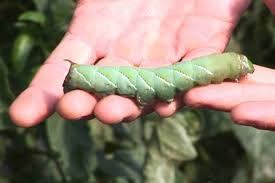The allure of stalking game wasn't something I understood until I spent a perfect day planting seedlings only to discover the next morning that said seedlings had disappeared. In cartoons, you have probably seen red-faced people with steam coming out of their ears. That was me.
I am now on a mission. I hunt the information highway for ammunition and stalk game in my yard. I now understand the thrill of the hunt. Learning how to vanquish a certain pest and implementing the technique in my garden makes my day.
Early on I decided that I was going to avoid chemical warfare. So I comb the library and the Internet and question acquaintances and sometimes complete strangers for information and success stories. Here is my hit list:
Earwigs are one common problem in my garden. I was surprised to learn that they are considered somewhat beneficial as they eat soft-bodied insects and their eggs. I chose to control them because they damage seedlings and soft fruit.
Earwigs like moist, dense undergrowth and debris, so control them by installing a drip system and cleaning up detritus. Check plant support stakes. If they are hollow, replace them. Earwigs hide inside hollow stakes during the day.
Trap earwigs with rolled-up newspaper, short pieces of hose or toilet paper rolls. Place your choice of traps near the affected area at dusk. In the morning, collect traps and shake them out over a bowl of soapy water.
Another tactic is to bury a tuna or cat-food tin up to the rim. Add 2 tablespoons vegetable oil and a small amount of bacon grease or fish oil as an attractant. Check daily and dump out any dead insects; refill with oil and replace the trap. After a week of diligence, you should notice a marked decrease in population. Then just stay on top of it. If it looks like earwigs are returning, repeat the process.
Hornworms are a huge pest, literally. One of my friends said that the first time she saw one, she screamed so loud that her husband came running. The best way to deal with these meaty monsters is to don garden gloves and either hand-pick them or, as my friend does, use kitchen tongs. If you have chickens or other fowl, you will make their day by flinging this rotund pest into their area.
There are not many plants that aphids don't like. However, they rarely kill plants, and you can usually wash them off with water or squish them. Interestingly, they tend to avoid plants that have their squashed brethren on them.
To control aphids, I make a 10 percent blend of non-detergent liquid dish soap and water and spray it directly on the plant. Wherever you find aphids, you will likely find ants. Get rid of the ants and the aphids have no protection from predators. When aphid populations climb, natural enemies like lady beetles and lacewings descend to feed on them.
According to lore, a Frenchman introduced snails to California during the Gold Rush—a food crop that went horribly wrong. Their overwhelming number today substantiates my belief that messing with Mother Nature has consequences. Snail presence in the garden is unmistakable because of the slimy trails they leave behind. Remove moist environments and clean up debris to control them. In my experience, the best traps are 12”x12” boards randomly laid around the yard. I go outside early in the morning, turn each board over and smash the attached snails. Keep at it for a week and you will prevail; then you just need to monitor for signs of their return.
Beneficial insects play a role, too. My kids and I purchased lady beetles one year and enjoyed the experience. Purchase lady beetles that have been kept under refrigeration and release them at dusk for best results.
The University of California's IPM web site (http://www.ipm.ucdavis.edu/PMG/PESTNOTES/) has extensive information on pest control. I have had great success implementing this research in my garden, and I believe that you, too, will reap the rewards.
Master Gardeners are volunteers who help the University of California reach the gardening public with home gardening information. Napa County Master Gardeners ( http://ucanr.org/ucmgnapa/) are available to answer gardening questions in person or by phone, Monday, Wednesday and Friday, 9 a.m. to Noon, at the U. C. Cooperative Extension office, 1710 Soscol Avenue, Suite 4, Napa, 707-253-4143, or from outside City of Napa toll-free at 877-279-3065. Or e-mail your garden questions by following the guidelines on our web site. Click on Napa, then on Have Garden Questions? Find us on Facebook under UC Master Gardeners of Napa County.
